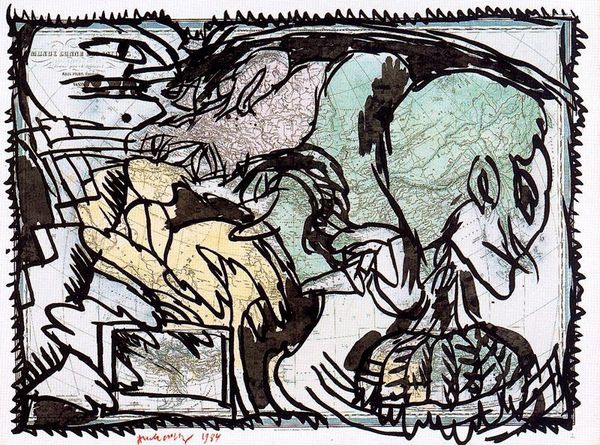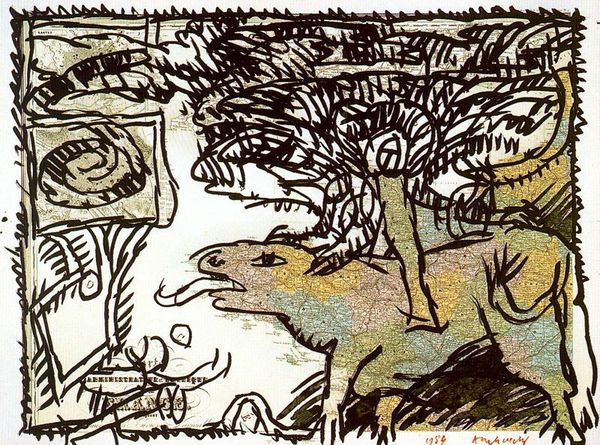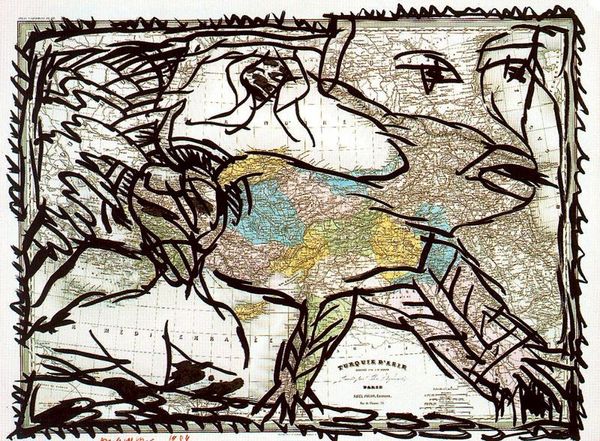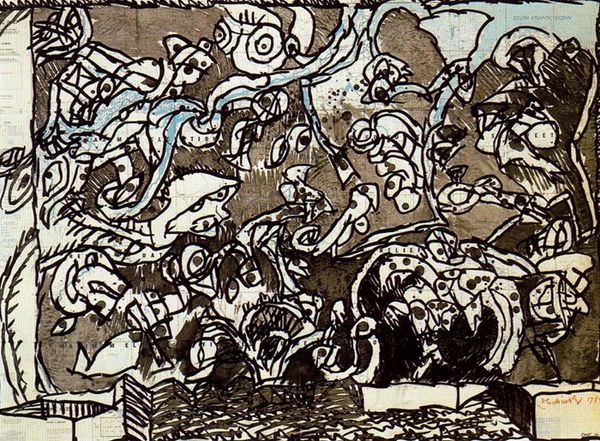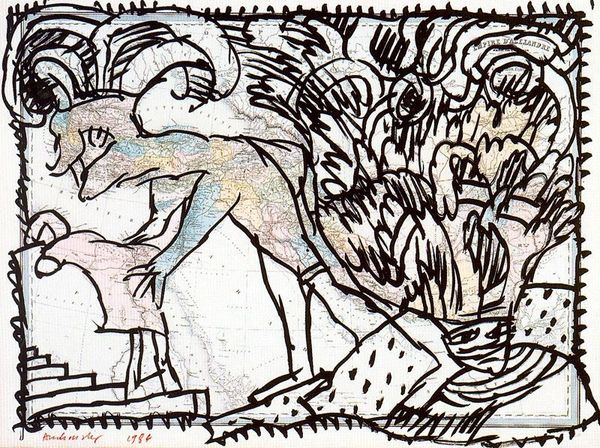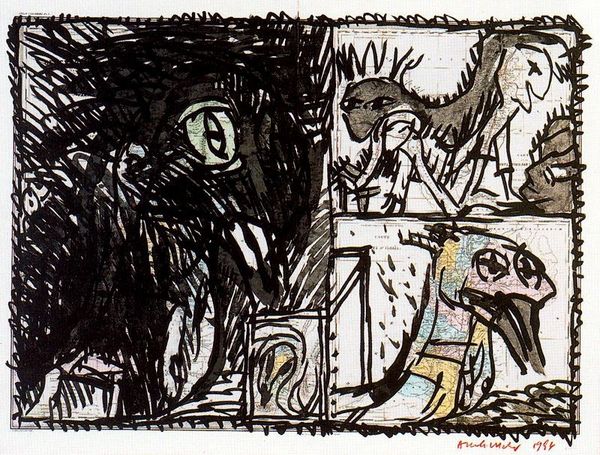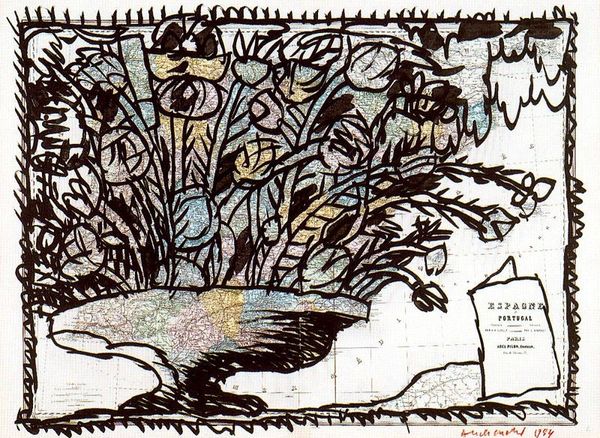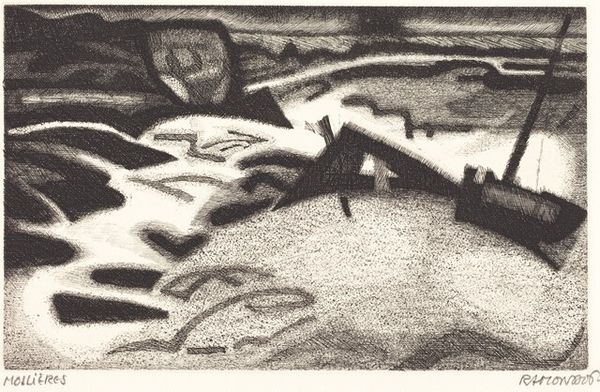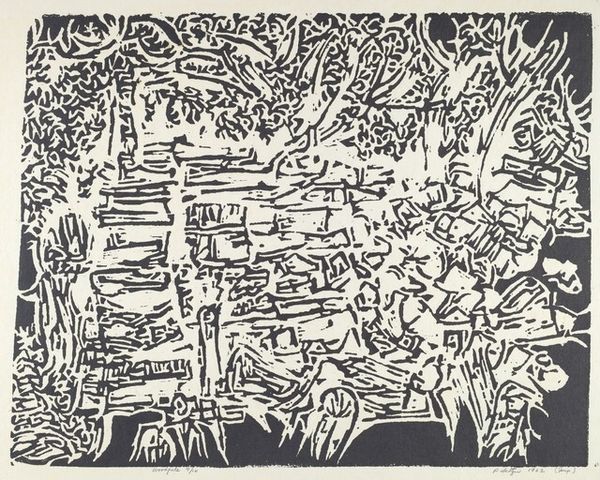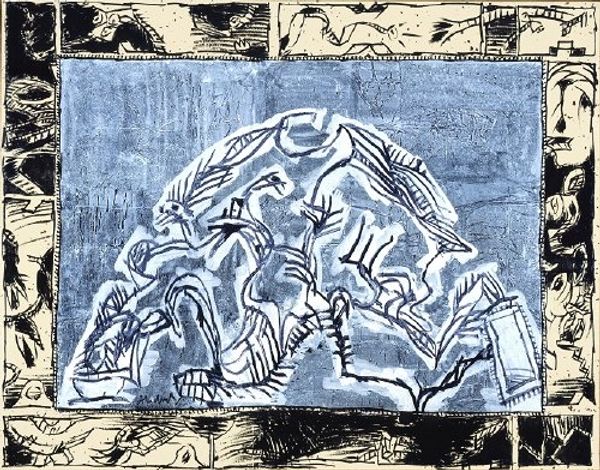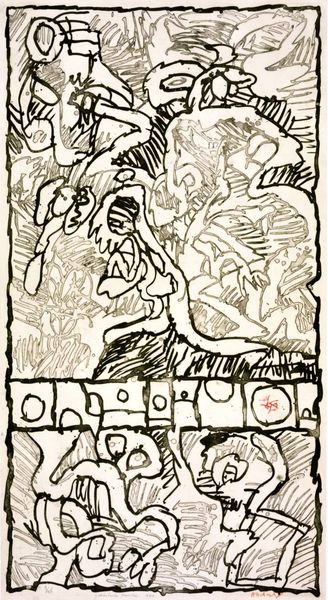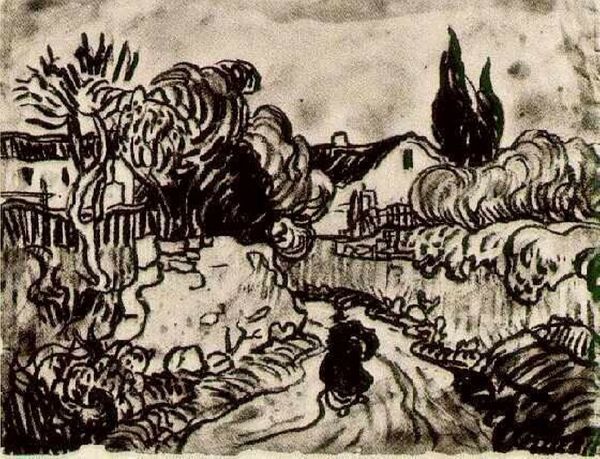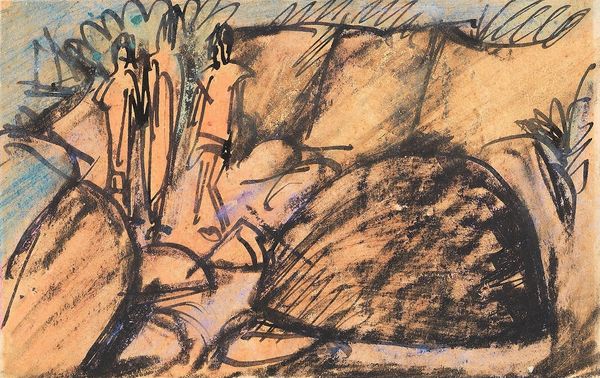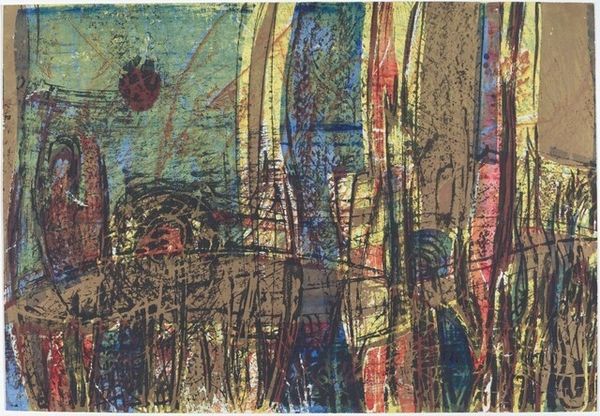
drawing, mixed-media, paper, ink
#
drawing
#
mixed-media
#
narrative-art
#
ink painting
#
paper
#
ink
#
naive art
#
abstraction
Copyright: Pierre Alechinsky,Fair Use
Curator: This intriguing mixed-media artwork is a piece by Pierre Alechinsky, titled "Page of the universal atlas, V. Mediterranean." Editor: My first thought? Playful chaos! The layered ink and mixed media gives it this energetic, almost frantic quality. It's as if a child got hold of a map and a marker and just went wild. Curator: That energy reflects Alechinsky's roots in the CoBrA group, a post-World War II movement that emphasized spontaneity and challenged academic conventions. This piece really shows the CoBrA artists' interest in mythology and surrealism. It’s layered over what appears to be an antique map of the Mediterranean. Editor: Yes, the map underneath adds this fascinating textural and conceptual element. You have this very precise, ordered representation of geography overlaid with these expressive, almost primal figures. I wonder about the decision to use ink – it feels immediate, direct. The roughness complements the deliberate naive style. Curator: I think you are right to focus on Alechinsky's interest in non-Western traditions. In his drawings we see a kind of art brut with influences that could range from cave painting, through Inuit or even Pre-Colombian art. The way he renders his subjects feels purposefully raw, primal as you mention, outside the traditional Western canon, as if seeking a universality. The map, as an icon of power, also gains a strange neutrality as Alechinsky builds over it, questioning how systems are layered together. Editor: Absolutely! And in this layering of image and process we see a negotiation and a subversion of traditional boundaries between disciplines. Curator: This layering hints at the museum as a system and relates back to what we, as viewers, are meant to be looking at and understanding in these institutional settings. What happens when it all spills out into seemingly disordered arrangement such as this? Editor: Well, it makes me think differently about maps and our attempts to chart and contain the world, and the materials with which we render those observations. It also challenges this idea of high art versus what we might consider 'craft', raising interesting questions about value and authorship, as this all invites multiple forms of interpretation. Curator: Precisely! It compels us to rethink the historical, cultural, and artistic weight behind these choices. It asks questions about what, as an audience, we give meaning to in our contemporary moment, by creating a space where boundaries have become less clear, perhaps like borders on a map in the wake of contemporary migrations, geopolitical clashes and social reorganization. Editor: A powerful statement conveyed through seemingly simple means. Curator: Indeed, and a wonderful example of how art can provoke reflection on our social structures.
Comments
No comments
Be the first to comment and join the conversation on the ultimate creative platform.
